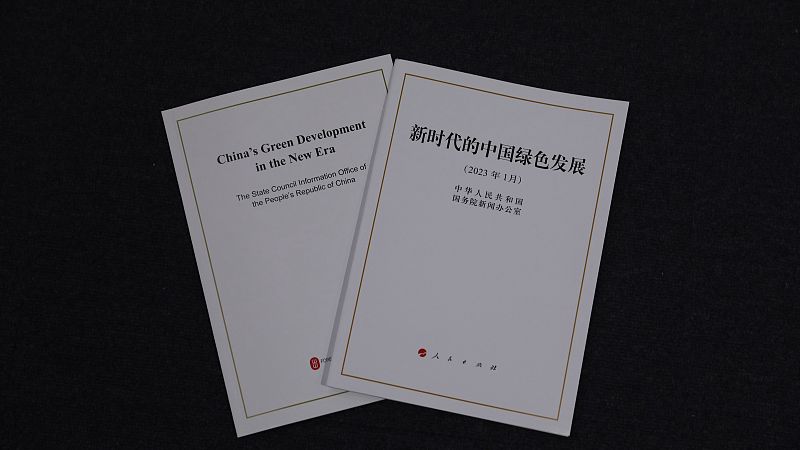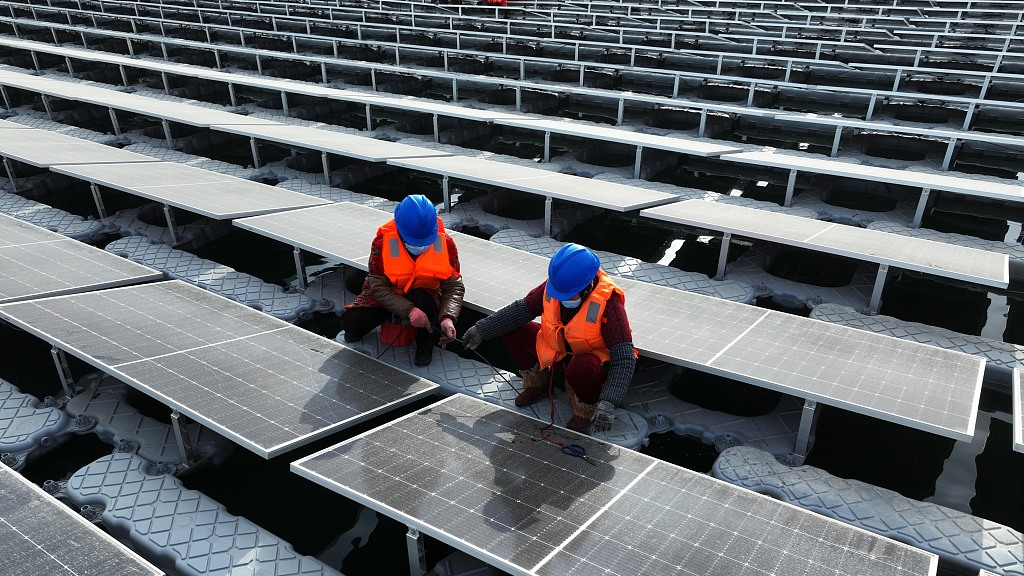
The white paper titled "China's Green Development in the New Era" is released by China's State Council Information Office in Beijing, China, January 19, 2023. /CFP
The white paper titled "China's Green Development in the New Era" is released by China's State Council Information Office in Beijing, China, January 19, 2023. /CFP
Editor's note: Stephen Ndegwa is the Executive Director of South-South Dialogues, a Nairobi-based communications development think tank. The article reflects the author's opinions and not necessarily those of CGTN.
What started as a social and economic abstract has become a buzzword in development. The concept of "green development" was perceived as only a preserve of environmental lobbyists serving global environmental bodies to put multinationals in check.
But green development has become a mainstream concept not just in the economic field, but also in overall human development as well. Any significant human activity requires a commensurate environment impact assessment to analyze the optimal cost-benefit outcome.
The development must be holistic with a win-win result for both humans and the environment. This is an ambition that China has pursued in tandem with its economic development.
The release of a white paper on January 19 titled, "China's Green Development in the New Era," documents China's journey and credentials in this sensitive area. The paper elaborates on how the country has committed to green development, participated in global climate governance and carried out wider international cooperation.
China wishes to share its best practices – ideas, actions and achievements in green development with the world. But what is China showcasing to the world? Green development entails the building of a green, circular, and low-carbon economy.
The use of green production methods aims to reduce pollution in the manufacturing process. Green development entails the economical and intensive use of resources and cleaner production. Given China's 1.4 billion population, this is a major feat. The country caters to the high demand for goods and services with a low carbon footprint compared with the magnitude of the process.
China is working on the perfect energy mix to mitigate emissions, while meeting its rising energy demands. According to its ambitious plans towards an energy revolution, in September 2020, the country pledged to peak its carbon dioxide emissions before 2030 and become carbon neutral before 2060, aligning itself with the 2030 Agenda for Sustainable Development and the Paris Agreement.
Experts believe that to achieve the foregoing twin goals, China requires a paradigm shift that involves scaling up green industries, while gearing up carbon-intensive industries towards net-zero emissions. But this transition must be a just and all-inclusive process, at both of the domestic and international levels.
In its white paper, China illustrates how it has upgraded its industrial structure and energy mix.
A policy brief published by the United Nations titled, "SDG-aligned Finance for Sustainable Development and Carbon Neutrality," said the private sector has been critical in meeting China's estimated investments for carbon neutrality. The capital requirements are estimated to range between 120 trillion to 170 trillion Chinese yuan ($17.69 to 25.06 trillion), well beyond the government's reach.
To finance its green technology push, the Chinese government encourages enterprises and financial institutions to support innovative green technologies. The system will also be backed by tax incentives and new "green technology banks." The government is funding research into "deep decarbonization technologies" in a variety of industrial sectors, including steel, cement, thermal power and agriculture.

Final construction is underway at a floating solar energy farm in Liaocheng City, east China's Shandong Province, December 21, 2022. /CFP
Final construction is underway at a floating solar energy farm in Liaocheng City, east China's Shandong Province, December 21, 2022. /CFP
Similar to recommendations proposed in the UN policy brief, China has engaged in four strategies to boost its green technologies, at home and abroad. These include pushing both legal and regulatory frameworks and other institutional mechanisms to combat climate change. China is offering incentives to encourage more companies to take up the green technology space both for production and commercial purposes.
Through capacity-building and raising awareness among its citizens, Beijing also encourages behavior change among its citizens to make them more engaged in the low-carbon transition. Trust and education have been ingrained in the transformation. In addition to being a ready market for the increasing green technologies, the environmental payoffs for the shift are priceless.
Extensive pilot projects have been carried out at the local level to explore methods to realize the value of eco-environmental products. New models of eco-friendly industry such as urban modern agriculture, leisure agriculture, eco-environmental tourism, forest healthcare, boutique homestays, and pastoral leisure complexes have witnessed rapid development.
China's green development white paper shows how innovation can help this new environmentally sensitive and sustainable culture go mainstream. The government is leveraging innovations in big data, biotech and artificial intelligence to tackle challenges such as pollution, habitat loss and climate change.
China's green industries are expanding. The renewable energy industry is growing rapidly, and China leads the world in the manufacture of clean energy generation facilities for wind and photovoltaic power. China produces more than 80 percent of the global total of polysilicon, silicon wafers, battery cells and modules. The quality and efficiency of the energy-saving and environmental protection industries have been upgrading.
China has developed a green technical equipment manufacturing system covering various sectors such as energy and water conservation, environmental protection, and renewable energy. The manufacturing and supply capacity of green technical equipment may ensure that the costs of production will continue to drop.
(If you want to contribute and have specific expertise, please contact us at opinions@cgtn.com. Follow @thouse_opinions on Twitter to discover the latest commentaries in the CGTN Opinion Section.)